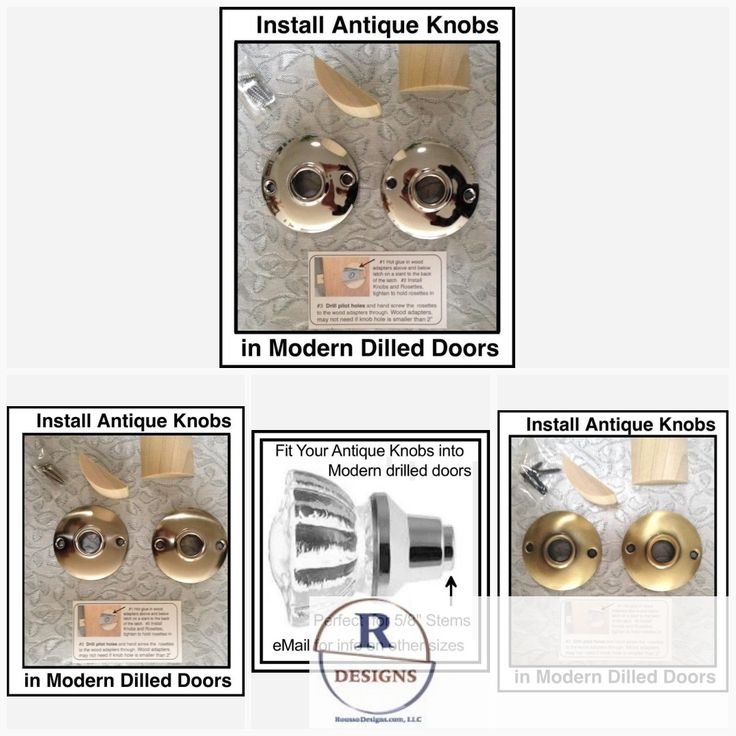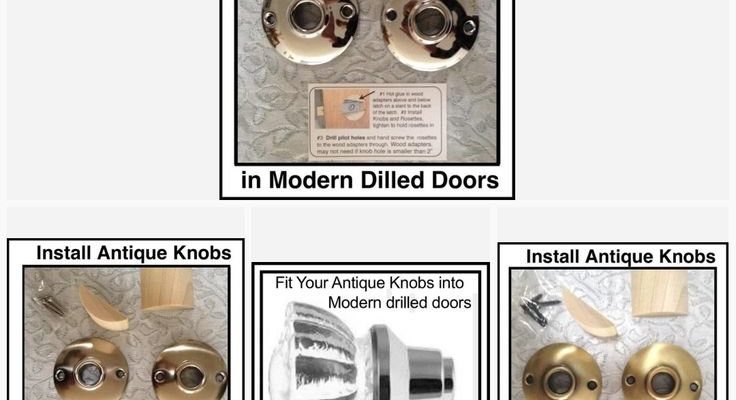
What Are Rosette Plates?
Rosette plates are decorative elements that enhance the appearance of door knobs. Think of them as the finishing touch, like a frame around a piece of art. They’re typically made from metal or plastic and come in various designs, from sleek and modern to elaborate and vintage.
Not only do rosettes add style, but they also serve a practical purpose. They can cover up imperfections around the hole in your door where the knob is installed. If you have a damaged or uneven surface, a rosette can help mask that, giving your door a more polished look. Plus, they can help with the durability of your door hardware by providing added stability.
When choosing rosettes, consider the overall style of your home. Do you lean toward modern or traditional aesthetics? Picking a rosette that complements your door knobs and overall decor can help create a harmonious look throughout your space.
Tools You’ll Need
Before you dive into the installation process, it’s essential to gather your tools. Don’t worry; you won’t need a full workshop! Here’s a quick list of what you’ll need:
- Phillips screwdriver: Most rosettes will require this for installation.
- Flathead screwdriver: Handy for removing existing knobs or handles.
- Tape measure: To ensure proper placement of your hardware.
- Level: To make sure everything is straight (because nobody likes a crooked knob).
- Pencil: For marking measurements if needed.
Having these tools handy will make your installation go smoothly. If you’re missing something, it might be a good idea to grab it before starting. This way, you won’t get halfway through and realize you need to make a trip to the hardware store.
Preparing Your Door
Now that you have your tools ready, it’s time to prepare your door for the installation of the rosette plates. Start by removing the existing door knob if you have one. Use your flathead screwdriver to gently pry off the faceplate and then unscrew the knob itself.
Once the knob is off, take a look at the surface around the door hole. If there’s any dirt or old paint, clean it up. A clean surface will help ensure that your rosette plate adheres well and looks neat. Also, check for any rough spots or damage. If you find anything significant, you might want to consider patching or sanding it down before installing the new rosette.
Next, it’s wise to double-check the size of the hole in your door. Most rosettes are designed to fit standard-sized holes, but measuring can save you from headaches later on. If your door has an unusual size, you might need to look for specialty rosettes or adjust the hole size.
Choosing the Right Rosette Plates
Choosing the right rosette plates is crucial for both function and style. As mentioned earlier, rosettes come in a variety of shapes, finishes, and sizes. It’s essential to select ones that complement your door knobs and the overall style of your home.
Here’s what to consider when selecting your rosettes:
- Style: Match the style of the rosette to your door knobs. For instance, sleek, modern knobs look great with simple, minimalist rosettes, while ornate knobs pair well with more elaborate designs.
- Finish: Consider the finish of your knobs as well. If your knobs are brass, look for brass rosettes. Chrome knobs work well with shiny silver rosettes. This creates a cohesive and polished look.
- Size: Ensure that the size of the rosette matches the door knob. A rosette that’s too large or too small can throw off the design.
If you’re unsure, don’t hesitate to bring your existing door knobs to the store for comparison. Seeing them side by side can help you make the right choice.
How to Install Rosette Plates
Ready to get started? Installing rosette plates is a straightforward process. Let’s walk through it step by step:
1. Position the Rosette: Start by holding the rosette against the door where the door knob will go. Ensure it sits comfortably around the hole. If it has a screw hole, line that up with the existing hole in your door.
2. Secure the Rosette: Use your Phillips screwdriver to insert the screw through the rosette and into the door. Make sure it’s snug but be careful not to overtighten, as that could damage the rosette or the door.
3. Install the Door Knob: Once the rosette is securely in place, attach your door knob. Follow the manufacturer’s instructions for securing it, often involving inserting screws from the back of the knob into the rosette.
4. Final Checks: After everything is installed, check the fit and ensure the knob turns smoothly. Use your level to make sure the rosette is straight. A little adjustment now can save you rework later.
Taking your time during installation is key. If you rush, you might find yourself fixing mistakes later. Remember, it’s not just about putting hardware on your door; it’s about enhancing your space.
Common Troubleshooting Tips
Even with careful installation, you might run into a few hiccups. Here are some common issues and how to handle them:
– Loose Rosette: If the rosette feels loose after installation, double-check the screws. They may need tightening or replacement if they’ve stripped.
– Misalignment: If your rosette or knob appears crooked, gently remove it and try reinstalling it. Make sure everything is aligned correctly before securing again.
– Paint or Stains on Rosette: If your rosette gets paint smudged on it during installation, don’t panic! A little rubbing alcohol on a soft cloth should clear it up quickly without damaging the finish.
– Knob Not Turning Smoothly: If the knob feels stiff or gets stuck, check to see if any screws are too tight, or the rosette is impeding the knob’s movement. Adjust as needed.
These small adjustments can make a huge difference in the final look and functionality of your door hardware.
Style Tips for Layering Hardware
Once you’ve positioned your rosette plates and knobs, consider how they fit within the overall look of your space. You can enhance the decor with a few thoughtful touches:
– Color Coordination: If you have multiple doors, consider using the same style of rosettes throughout your home for a cohesive look. Or, mix and match styles for added interest!
– Complementing Other Decor: Think about how your door hardware works with nearby elements, like light fixtures or furniture. Keeping a consistent theme will help your space feel curated.
– Adding Layered Textures: If you have a modern rosette plate, try pairing it with rustic or vintage knobs. This contrast can add personality and character to your door.
The beauty of home decor is that it should reflect *you*. Feel free to experiment and find what makes you happiest.
In conclusion, installing rosette plates for decorative interior door knobs can elevate the entire look and feel of your home. It’s a simple DIY project that allows you to express your style while also enhancing functionality. With the right tools, careful planning, and a sprinkle of creativity, you can transform the most mundane doors into stunning focal points. Happy decorating!
